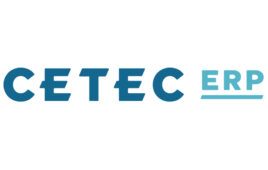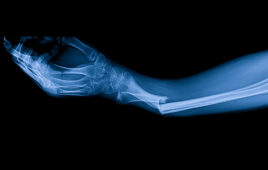
NeuroMetrix’s Quell 2.0 [Image courtesy of NeuroMetrix]
AI will allow Quell 2.0 to tailor treatment to each individual user, according to the Waltham, Mass.–based company.
Launched in September 2018 Quell 2.0 is 50% smaller and 20% more powerful than the original Quell, which debuted in 2015. Quell is worn on the leg regardless of the site of pain and is designed to send neural pulses to the brain that trigger a natural pain relief response in the central nervous system. Patients control the device and track their pain using a smartphone app. Quell 2.0 is available over-the-counter for about $300.
So how could AI help patients who use the device? NeuroMetrix chief commercial officer Frank McGillin recently discussed the decision to use AI and the future of Quell with Medical Design & Outsourcing.
MDO: Why did the company decide to incorporate AI into Quell 2.0?
McGillin: Early on, looking at Quell as a digital intervention, we realized that we had a lot of valuable data from a macro- and a subpopulation standpoint, documenting how Quell was either working for them or how it may be working differently for different populations. So we initiated the Quell Health Cloud in 2016 to obtain that data.
We have over 70,000 users who contributed enough data that we were able to start applying machine learning and looking at that dataset to find out what might improve the overall process. For example, the way a 40-year-old woman with fibromyalgia who’s in relatively good health is dosing Quell may be very different from an overweight smoker diabetic who’s 60. We characterized user phenotypes, such as back pain, knee pain, diabetes, height and weight, age, weather sensitivity, and attitudes about pain, such as catastrophizing.
The first time someone uses it, there’s a calibration process to determine the dosage of electrical stimulation we’re providing. It looks at their sensation threshold based on nerve health, skin condition and body mass. If their sensation threshold is X, we apply a constant factor to that, and that’s their therapy dosage. With traditional TENS, you’re basically guessing.
We’re applying basically Big Data to take a more intelligent approach to dosing for the individual. It’s really important to get to that right level of stimulation. If you understimulate nerves, it really won’t be effective. On the flip side, if you overstimulate, it becomes uncomfortable and the user will abandon.
MDO: What have been the company’s main challenges in device adoption?
McGillin: The first was convincing consumers that a device worn on the leg can treat pain regardless of the source of that pain. A traditional TENS is a very localized technology that’s worn at the point of pain, but having it strapped to your back is inconvenient. We designed Quell for the leg because it’s an excellent place to stimulate sensory nerves and users can also dose from there over an extended period of time. A Harvard University study that was presented at the 9th World Congress of the Institute of Pain in Dublin, Ireland in May 2018 (and partially funded by NeuroMetrix) showed that Quell is good for lower back pain.
The second challenge was one of adherence. Some chronic pain sufferers may not see results for two or three weeks because the body is conditioned to be overly sensitive to pain.
How do we make sure that we get that new user off to the right start? If they have a great experience in that first 30 days, they’re hooked. The contribution of AI is we’re making sure we‘re dramatically increasing the odds that they’re starting off correctly.
Another challenge is getting people to use technology to treat chronic pain when most are accustomed to using medication. But with the opioid crisis, we did some research and found that people want new solutions.
MDO: What’s next on the horizon for Quell?
McGillin: We’re approaching 200,000 units in terms of sales, and we’re adding gamification techniques to the app to give the user a sense of accomplishment. Also, those who have bought Quell 2.0 before the addition of AI will be able to update the firmware on their device to manage it.








Happy to learn that such a small device can manage the pain so effectively. Thank you for sharing the information regarding this.